Kailash Karthik Saravanakumar
Command A: An Enterprise-Ready Large Language Model
Apr 01, 2025Abstract:In this report we describe the development of Command A, a powerful large language model purpose-built to excel at real-world enterprise use cases. Command A is an agent-optimised and multilingual-capable model, with support for 23 languages of global business, and a novel hybrid architecture balancing efficiency with top of the range performance. It offers best-in-class Retrieval Augmented Generation (RAG) capabilities with grounding and tool use to automate sophisticated business processes. These abilities are achieved through a decentralised training approach, including self-refinement algorithms and model merging techniques. We also include results for Command R7B which shares capability and architectural similarities to Command A. Weights for both models have been released for research purposes. This technical report details our original training pipeline and presents an extensive evaluation of our models across a suite of enterprise-relevant tasks and public benchmarks, demonstrating excellent performance and efficiency.
Event-Driven News Stream Clustering using Entity-Aware Contextual Embeddings
Jan 26, 2021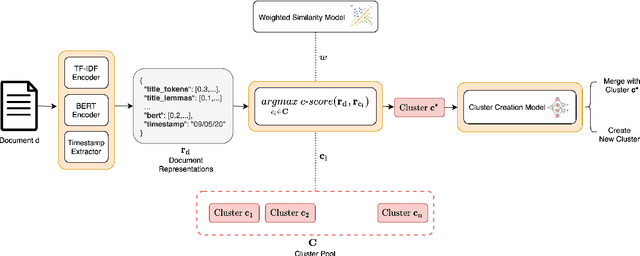
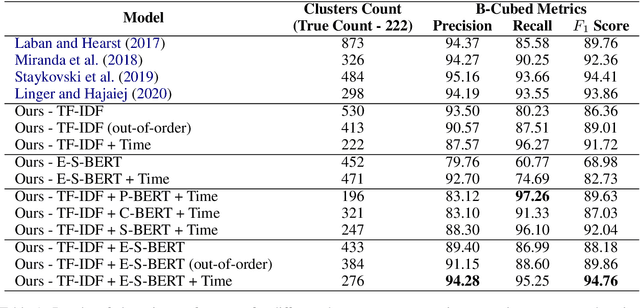
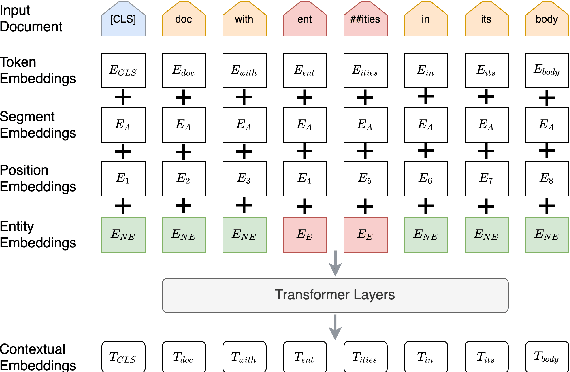
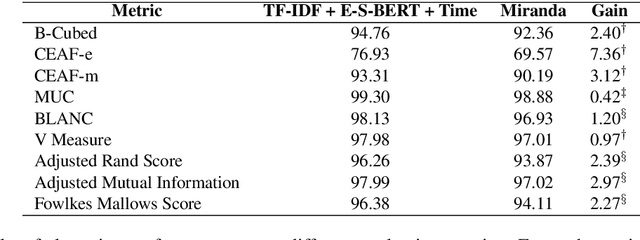
Abstract:We propose a method for online news stream clustering that is a variant of the non-parametric streaming K-means algorithm. Our model uses a combination of sparse and dense document representations, aggregates document-cluster similarity along these multiple representations and makes the clustering decision using a neural classifier. The weighted document-cluster similarity model is learned using a novel adaptation of the triplet loss into a linear classification objective. We show that the use of a suitable fine-tuning objective and external knowledge in pre-trained transformer models yields significant improvements in the effectiveness of contextual embeddings for clustering. Our model achieves a new state-of-the-art on a standard stream clustering dataset of English documents.
Multi-Modal Emotion Detection with Transfer Learning
Nov 13, 2020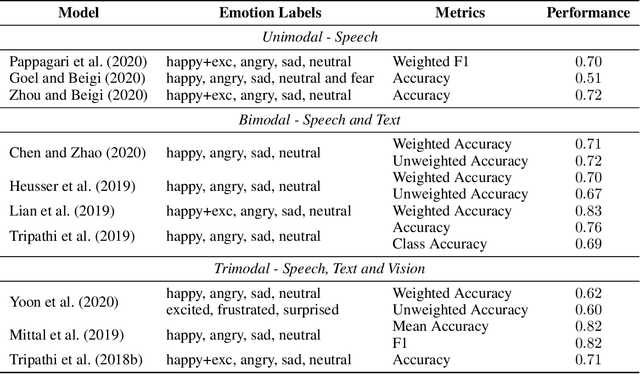
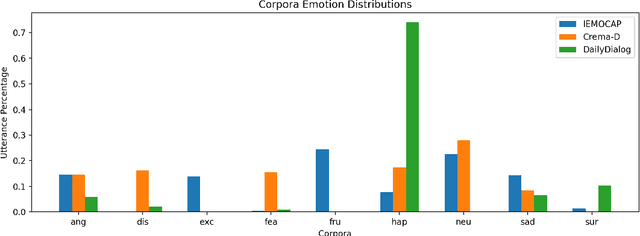

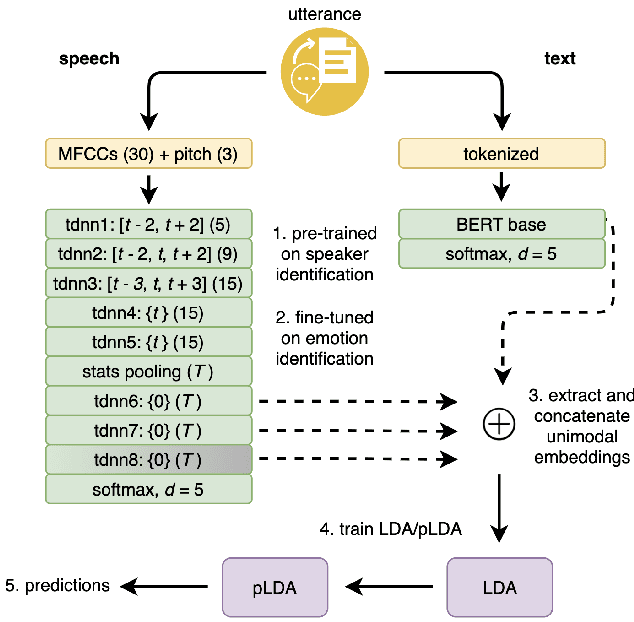
Abstract:Automated emotion detection in speech is a challenging task due to the complex interdependence between words and the manner in which they are spoken. It is made more difficult by the available datasets; their small size and incompatible labeling idiosyncrasies make it hard to build generalizable emotion detection systems. To address these two challenges, we present a multi-modal approach that first transfers learning from related tasks in speech and text to produce robust neural embeddings and then uses these embeddings to train a pLDA classifier that is able to adapt to previously unseen emotions and domains. We begin by training a multilayer TDNN on the task of speaker identification with the VoxCeleb corpora and then fine-tune it on the task of emotion identification with the Crema-D corpus. Using this network, we extract speech embeddings for Crema-D from each of its layers, generate and concatenate text embeddings for the accompanying transcripts using a fine-tuned BERT model and then train an LDA - pLDA classifier on the resulting dense representations. We exhaustively evaluate the predictive power of every component: the TDNN alone, speech embeddings from each of its layers alone, text embeddings alone and every combination thereof. Our best variant, trained on only VoxCeleb and Crema-D and evaluated on IEMOCAP, achieves an EER of 38.05%. Including a portion of IEMOCAP during training produces a 5-fold averaged EER of 25.72% (For comparison, 44.71% of the gold-label annotations include at least one annotator who disagrees).
 Add to Chrome
Add to Chrome Add to Firefox
Add to Firefox Add to Edge
Add to Edge